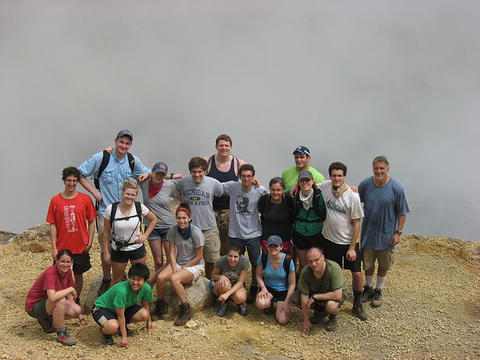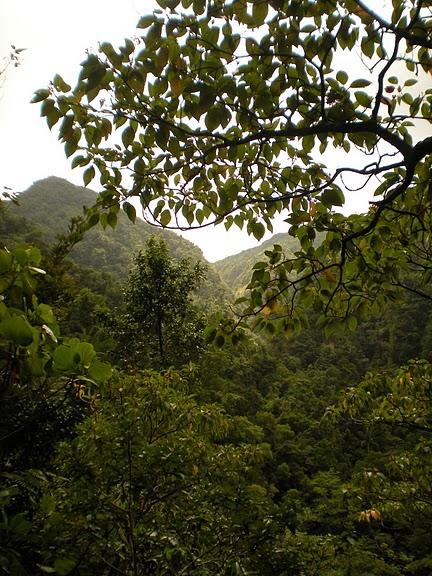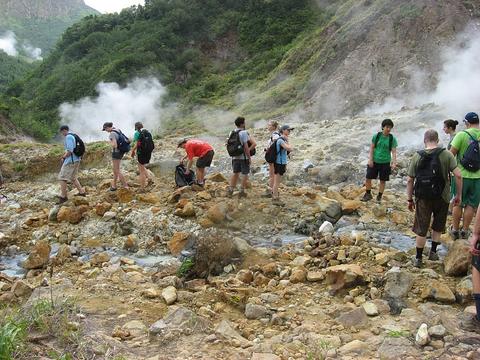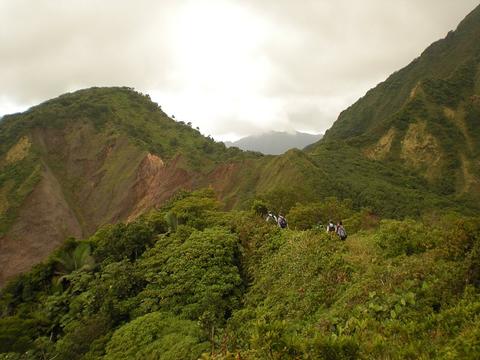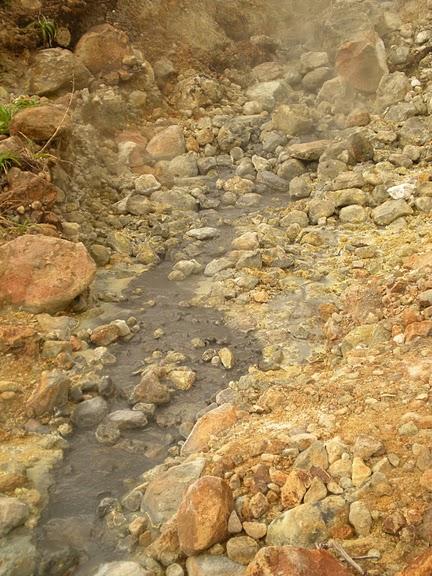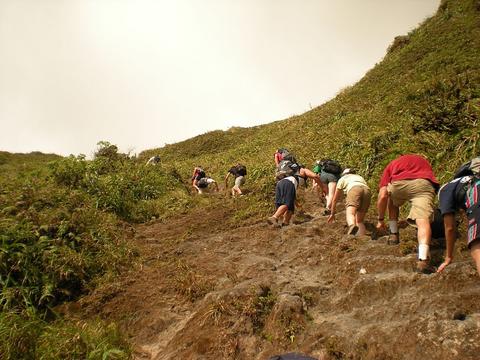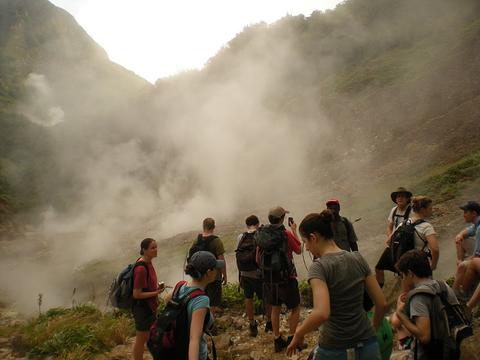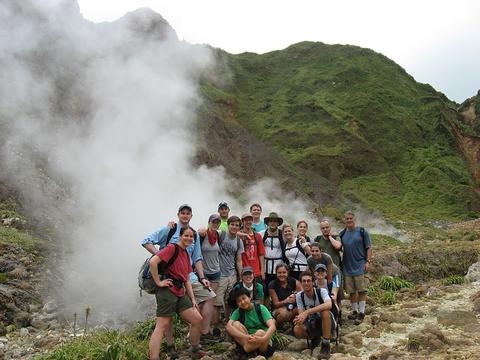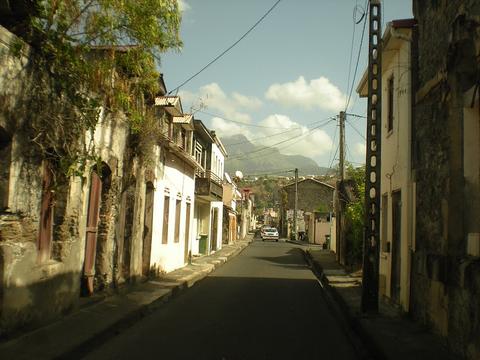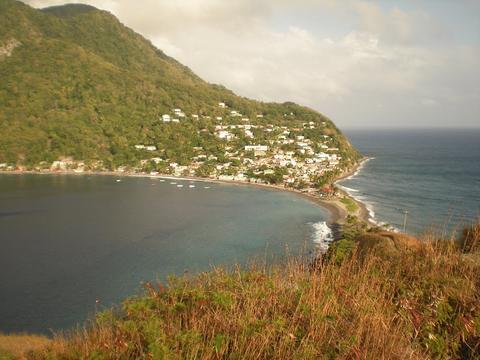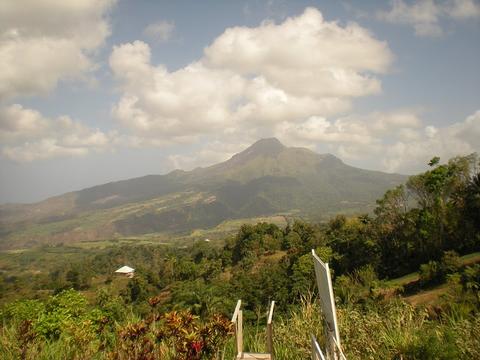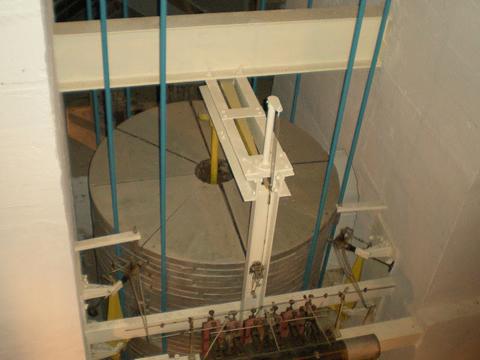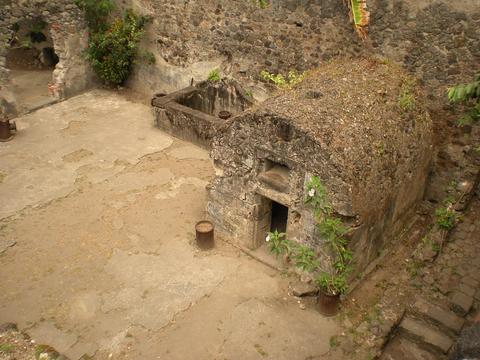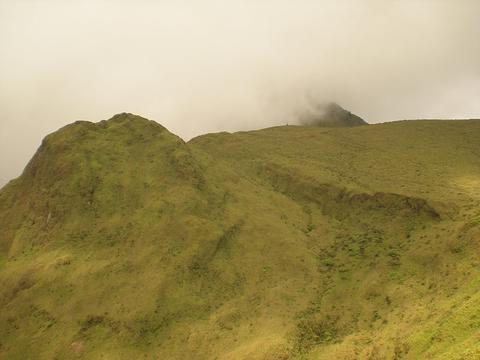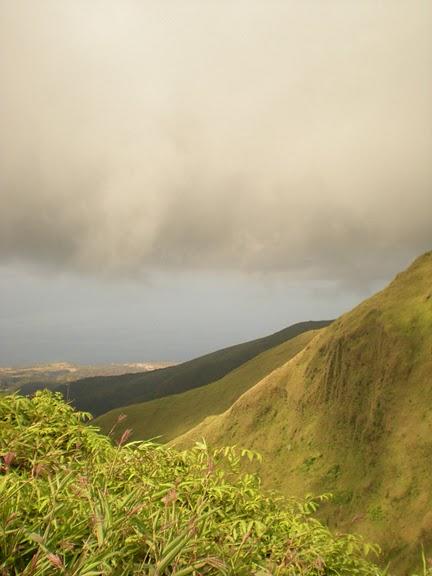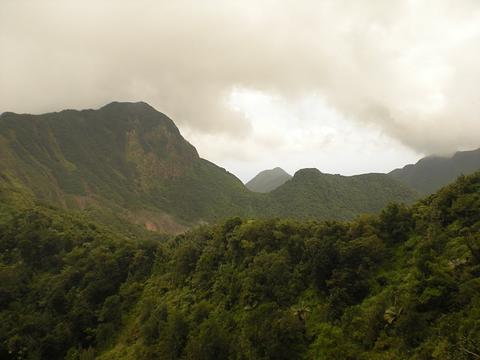Students from G&G100 Natural Disasters in 2009 went on a field trip of “disasters” in the Lesser Antilles (Eastern Caribbean) in March 2010. The trip was lead by GG100 Prof. Dave Bercovici along with Prof. Maureen Long and Dr. Frank Robinson. The
group first flew to the island of Dominica that is one of the most volcanically active islands in the Caribbean, next to Montserrat which is largely destroyed and inaccessible. The trip in fact took place just a few months after Montserrat erupted covering Dominica in ash, and not long after the devastating earthquake in Haiti that year. Dominica is a pristine but economically poor island with fascinating geology and history (it was named “Dominica” by Columbus rather mundanely because he sailed by it on a Sunday). Dominica also has the last existing reservation of the original Carib Indians (who had themselves “displaced” the Arawak Indians long before Europeans arrived). It has 9 potentially active or active volcanic centers, whereas all other Caribbean volcanoes have at most 1 volcano. Our group stayed in the 19th century Springfield Plantation in the Hills of Dominica, which is now part of the Archbold Tropical Research & Education Center run by Clemson University. On the first day the group explored the island, visited the Emerald Pool water falls and the Carib Territory, and at night we installed Prof. Long’s broad-band seismometer at the Springfield Plantation (with a lot of digging, wiring and piping) for a 1 year seismological pilot study of the Caribbean subduction zone. We then hired a local guide to take us on an arduous 15 mile hike across the Valley of Desolation (the site of a volcanic destruction decades before) and to the Boiling Lake, which is the most volcanically active site on the island and is indeed a boiling lake. The hike was completed with a swim up the canyon and water falls of Titou Gorge. The following day the group took a ferry to Martinique where we stayed in the small village of Le Carbet south of St. Pierre. St. Pierre is of great volcanological and historical importance because it was destroyed in the 1902 eruption of Mt. Pelée where 30,000 citizens were killed in an instant by a direct-blast pyroclastic flow (nuée ardent). The catastrophe was also famous because, despite weeks of prior warnings and lesser disasters, the city was refused evacuation by the governor because of critical elections taking place across the island during that month. Our group fist visited the Observatoire Volcanologique et Sismologique de Martinique (run by the IGP in Paris), where we were hosted by Dr. Cyril Aubaud who provided a tour of the equipment and techniques for forecasting and warning for impending eruptions and earthquakes. The central activity however was another arduous 10 mile hike up and over Mt. Pelée, led by Dr. Aubaud. Despite the mountain being on fire the day we arrived (due to an agricultural burn that had gone out of control) we made our way to the mountain outer crater rim and observed the central dome that had been built up in the matter of a year after the 1902 eruption. We hiked to the peak of the dome and the traversed across the other side of the central crater and eventually down again. Our time in the islands was completed with a celebratory dinner at the beach side fish grill Les Pecheurs and live local French Caribbean music and sea-side dancing (oh well, why not). The group returned the next day, although our flight to JFK was diverted to Washington Dulles because of hurricane force winds in NY (our final encounter with natural disasters) and it took 19 extra hours to return home.
